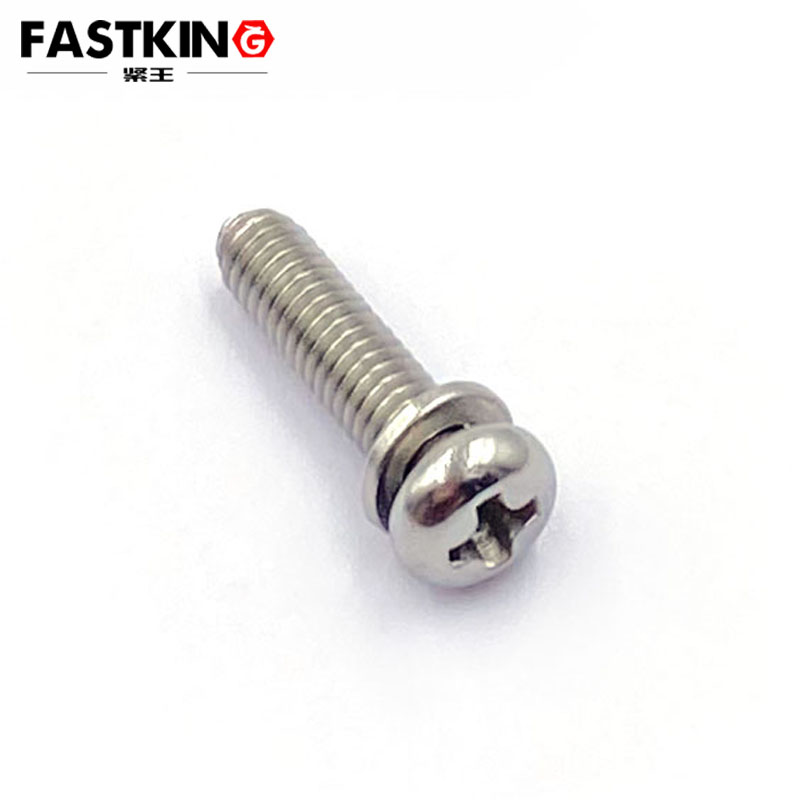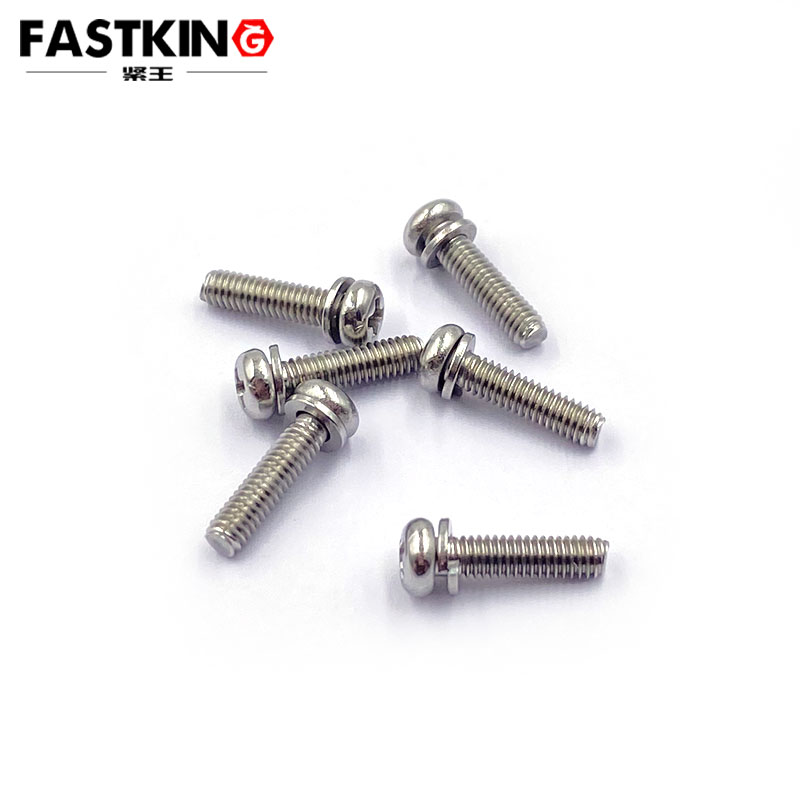Pan-Head Cross-Head Two-Combination Screws: Small Parts, Big Impact
In modern industrial production, the pan-head cross-head two-combination screw is a common fastener that plays a significant role in numerous fields. Combining a pan head design with a cross-head structure, this screw ensures both convenient installation and reliable connection strength, making it an indispensable component in modern manufacturing.

I. Structural Features of Pan-Head Cross-Head Two-Combination Screws
The pan-head cross-head two-combination screw features a pan head with a larger diameter, providing a greater contact area for more stable connections. Its flat top surface is suitable for assembly applications that require a smooth surface. The cross-head structure allows for better engagement with screwdrivers, preventing slippage and improving installation efficiency.
The screw's thread section is precision-engineered to ensure perfect compatibility with nuts or threaded holes. Optimized thread angles and pitch ensure sufficient clamping force while reducing the required installation torque. Surface treatments such as galvanizing or nickel plating enhance the screw's corrosion resistance and extend its service life.
In terms of material selection, these screws are commonly made from high-quality carbon steel or stainless steel. Carbon steel screws, after heat treatment, offer high strength and are suitable for most conventional applications. Stainless steel screws, on the other hand, provide better corrosion resistance and are ideal for humid or corrosive environments.
II. Usage Methods of Pan-Head Cross-Head Two-Combination Screws
When using pan-head cross-head two-combination screws, it is crucial to select the appropriate screw size based on the thickness and material properties of the components to be joined. Ensure that the threaded holes are clean and free of debris, and that the threads mesh well. Use a cross-head screwdriver that matches the screw size, ensuring that the tool head is fully seated in the screw slot.

During installation, manually screw in a few turns to confirm proper thread alignment before using a tool to tighten. Keep the screwdriver aligned with the screw axis to avoid slippage and stripping. For critical connections, it is recommended to use a torque wrench to tighten the screw to the specified torque value, ensuring connection reliability.
Special considerations are needed when working with certain materials: In soft materials like aluminum alloy, a steel thread insert can be pre-installed in the threaded hole to enhance connection strength. When working with plastic components, control the tightening force to prevent material cracking.
III. Application Scenarios of Pan-Head Cross-Head Two-Combination Screws
In the electronics and electrical industry, pan-head cross-head two-combination screws are widely used for circuit board fixation and equipment housing assembly. Their flat head design does not interfere with other components, and the cross-head structure facilitates precise assembly by automated equipment.

In the field of mechanical equipment manufacturing, these screws are commonly used for panel fixation and component connections. Their reliable connection performance ensures stable equipment operation, and their easy disassembly makes maintenance and servicing more convenient.
In the furniture assembly industry, pan-head cross-head two-combination screws are highly popular due to their convenient installation and strong connection. Whether for panel furniture or metal furniture, these screws are widely used. Their aesthetic design also enhances the overall quality of the furniture.
IV. Conclusion
Though small in size, the pan-head cross-head two-combination screw plays a vital role in modern manufacturing. With continuous advancements in material technology and manufacturing processes, the performance of these screws will further improve, and their application scope will expand. Proper selection and use of pan-head cross-head two-combination screws can not only increase production efficiency but also ensure product quality, providing a reliable guarantee for modern industrial development.
